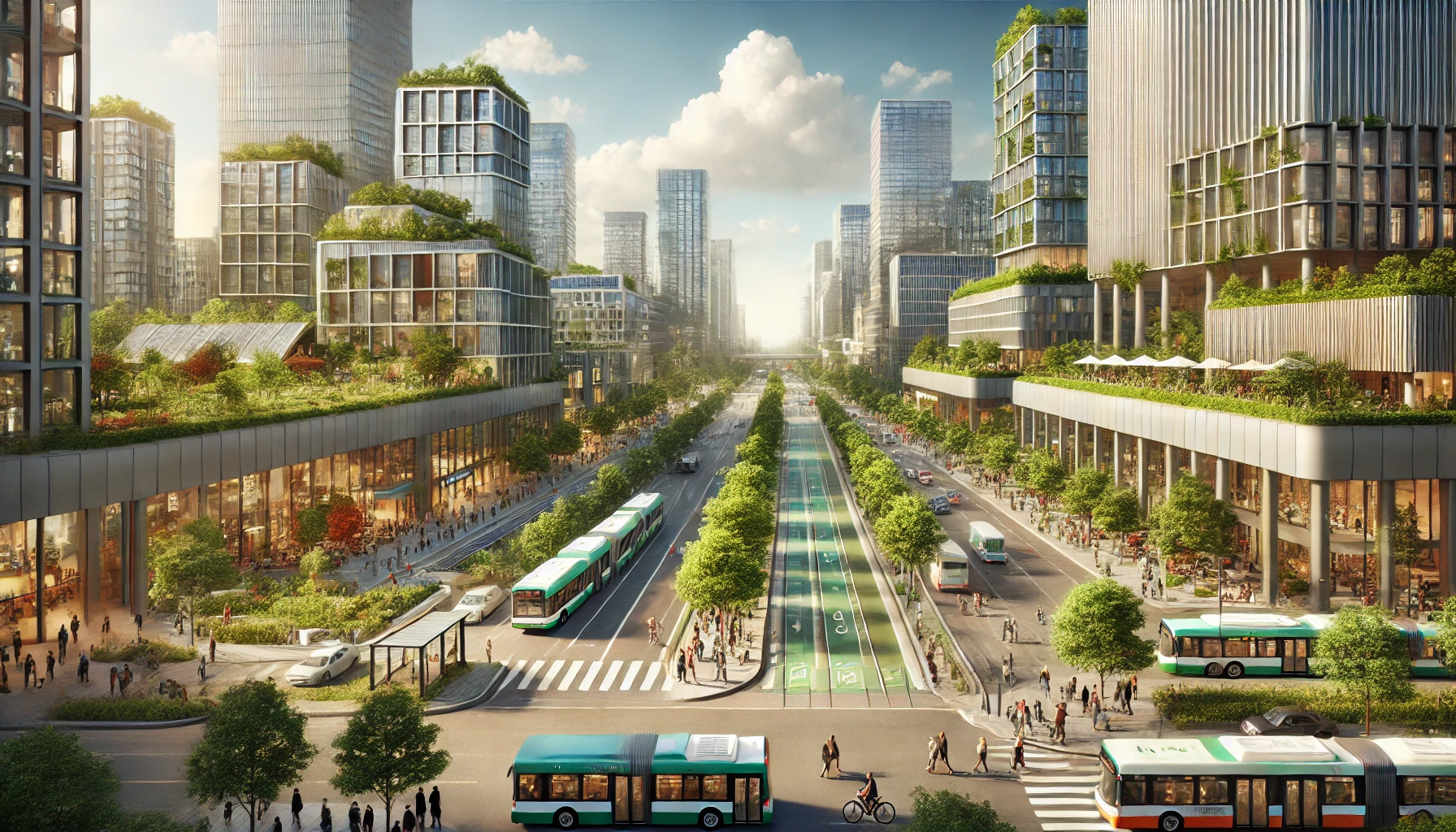Unlocking Urban Potential: The Impact of Transit-Oriented Development in Emerging Markets
The World Bank's report on Transit-Oriented Development in Emerging Cities advocates for integrating land use and transport planning to create sustainable, walkable cities. By promoting higher densities, mixed land uses, and inclusive design, TOD enhances public transit use, reduces car dependency, and fosters economic growth.

A study by the World Bank offers a comprehensive guide on how transit-oriented development (TOD) can serve as a critical strategy for sustainable urban growth, especially in rapidly expanding cities. Developed by a team of experts including Arturo Ardila-Gomez, Ok Stella Namkung, Karla Dominguez-Gonzalez, He He, and Nada Bona, this report is part of the World Bank's ongoing efforts to support infrastructure planning in emerging economies. It addresses the urgent need for cities to develop efficient, accessible, and environmentally sustainable transportation systems as urbanization accelerates, with predictions showing that by 2050, 70 percent of the world's population will reside in cities. The TOD model prioritizes integrating residential, commercial, and recreational spaces within walking distance of public transport, reducing the reliance on private vehicles, decreasing traffic congestion, and cutting pollution, while fostering inclusive, vibrant communities. For emerging cities, where economic development is critical, TOD represents not only a planning strategy but a commitment to sustainable growth, one that links economic vitality with environmental stewardship.
Aligning Land Use and Transport for a Better Urban Future
The report highlights the importance of aligning land use regulations with transport planning to create urban environments that promote public transportation, walking, and cycling as primary modes of transit. By examining the intersection of urban economics and TOD principles, the authors offer a model for how cities can avoid the pitfalls of unplanned, car-oriented growth. Many cities in developing countries, the report notes, already feature elements conducive to TOD-dense populations, low car ownership, and high levels of walking and public transit use. However, the lack of coherent planning often leads to inefficiencies. Housing developments, for example, are frequently located far from employment centers, requiring long, costly commutes that contribute to urban sprawl and congestion. TOD seeks to address this by encouraging compact, mixed-use developments around transit hubs, making public transport more accessible and practical for urban residents.
The Sandbox Model: Testing the Impact of Land Use Regulations
A key innovation in the report is the introduction of a sandbox model that simulates the effects of various land-use regulations (LURs) on transit ridership and walkability. The model tests factors such as floor area ratio (FAR), parking mandates, and setbacks, demonstrating that regulatory changes can significantly influence public transport use. The findings reveal that increasing FAR—thus allowing more intensive use of land alongside reducing setbacks and parking requirements, can greatly enhance the viability of public transport. These changes encourage higher density and more compact development, reducing distances that residents need to travel to access transit stations. The model shows that denser, more walkable urban spaces foster increased transit ridership, aligning with TOD's core objectives. This integration of land use and transport planning is crucial for shaping cities that are not only functional but also sustainable and livable.
Creating Inclusive and Gender-Sensitive Cities
In addition to its technical analysis, the report underscores the need for inclusive planning that addresses the mobility challenges faced by different groups, particularly women. Gender-sensitive urban design is essential for ensuring equitable access to transportation, and land use regulations can play a significant role in enhancing safety and accessibility for women. By creating walkable, well-lit streets with frequent public spaces and reducing barriers to access, cities can improve the overall quality of urban life for all residents. This focus on inclusivity extends to addressing the broader social and economic divides often in emerging cities, where poorer residents may have limited access to public services and employment opportunities due to inefficient transit systems.
Practical Recommendations for Transit-Oriented Growth
The report offers practical recommendations for improving TOD practices in emerging cities, strongly emphasizing creating market-friendly zoning regulations that allow for higher densities and mixed land uses. The development of multimodal streets that accommodate not only cars but also pedestrians, cyclists, and public transit is another key recommendation. By ensuring that streets are designed with all users in mind, cities can create urban environments that are safer, more accessible, and more conducive to sustainable modes of transport. In line with TOD principles, the report calls for a reduction in parking mandates and setbacks, which often prioritize car use and discourage the development of compact, walkable neighborhoods. By reallocating street space to prioritize public transport and non-motorized forms of mobility, cities can support a shift away from car dependency.
A Transit-Oriented Future for Emerging Cities
Emerging cities, which house 75 percent of the world’s urban population, are at a critical juncture. If they fail to adopt TOD principles, they risk developing into inefficient, sprawling cities that lack the infrastructure necessary to support sustainable growth. The report emphasizes that TOD is not just about improving transportation systems but also about creating equitable access to services, fostering economic development, and ensuring environmental sustainability. By implementing the strategies outlined in the report, cities can build the foundations for a more connected, efficient, and inclusive urban future. As the global population continues to urbanize, the principles of TOD will be essential for shaping cities that are both resilient and dynamic, paving the way for a future in which urban living is not only sustainable but also enjoyable and equitable for all residents.
- FIRST PUBLISHED IN:
- Devdiscourse
ALSO READ
Chhattisgarh Government Reorganizes Key Positions Amidst Custodial Death Controversy
Protests Erupt Over Custody Assault Incident in Odisha
Karnataka BJP MLA Munirathna Remanded to 14 Days Judicial Custody
BJD Stages Protest Over Alleged Custodial Assault of Army Officer's Fiancee
BJP MLA Munirathna Arrested on Rape and Harassment Charges, Remanded to 14-Days Judicial Custody










